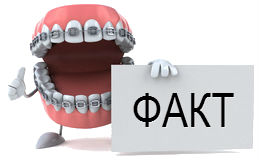Human teeth always have a slight physiological mobility, which helps to evenly distribute the load between them when chewing. But there are also cases when excessive mobility occurs: the teeth will move in all four directions. In the most severe cases, movement up and down and wrapping around its axis can also be observed.
Such a pathology of the teeth is a sign of the occurrence of certain dental problems that are in the last stages. Such a problem not only leads to a violation of chewing and the appearance of a smile, but also to the complete loss of teeth.
Possible causes of mobility
Depending on the problem that led to the emergence of pathology, I distinguish two main types of it:
- Pathological;
- Physiological.
Physiological type of mobility
The presence of physiological mobility of teeth arises as a result of the need to evenly distribute the load on the jaw during chewing.
But in this case, the movement of the teeth is so insignificant that it is impossible to notice it on your own - only through special studies.
Evidence of the presence of physiological mobility is the presence of minor grinding on the contact areas of the teeth.
Pathological mobility
With pathological mobility, you can notice a change in the position of the teeth even without any research. The reasons for this mobility are:
- Insufficient oral hygiene, which leads to the multiplication of various pathogens there and the appearance of dental deposits;
- Incorrect choice of dental care products or their incorrect use;
- Unnatural position of individual teeth or pathological bite;
- endocrine diseases;
- Loss of individual teeth without the installation of implants or prostheses in their place;
- Doctor's mistakes during the provision of dental procedures;
- Anomalies of the dentition;
- Inflammation of the gums;
- Various injuries.
Problem classification
In modern medicine, to determine the mobility of teeth, there are several classifications that make it possible to assess its degree. But the most commonly used is:
- I degree . Unstable position of individual teeth in relation to neighboring ones. In this case, the amplitude of movement does not exceed 1 mm.
- II degree . The amplitude of tooth movement is slightly more than 1 mm. In this case, the mobility of the teeth to the right-left and forward-backward is observed.
- III degree . Teeth move in any direction, including vertical.
- IV degree . In addition to the signs of the third degree of mobility, the rotation of the teeth around their axes is also added.
How does it heal?
Eliminating the problem of tooth mobility is a whole range of measures that must first be directed to the treatment of the causes that are the consequence of the occurrence of this pathology.
The treatment itself must be selected on an individual basis for each case. One of the components of treatment is splinting . This is a way of tying teeth together. This method is removable and non-removable type.
In the case of using removable splinting, a special design is installed on the teeth, which, if necessary, can be removed for cleaning and put back on.
The fixed type of splinting involves the installation of a special material on the jaw, which cannot be removed on its own.
For each specific case, one of several types of splints can be installed on the teeth:
- Ring type tires - metal rings connected to each other. Able to provide reliable fixation of teeth by binding them to each other;
- Semi-ring tires - differ from the previous type in that they are installed only on the inside of the tooth, as a result of which they are not noticeable from the outside. This ensures an aesthetic smile;
- Cap-type tires - several caps soldered together. They are put on the cutting inner surface and the inner side of the teeth;
- Insert tires - they are distinguished from the previous type by the presence of special protrusions for deepening the teeth. Due to this, the fixation of the tire is more reliable;
- Tires of the crowned variety - are installed only in the case of a normal condition of the gums. This type of splint provides the most aesthetic appearance of the teeth in comparison with other types;
- Intradental splints are a modern type of splint that connects teeth to each other using a special type of implantable inserts.
Thus, tooth mobility is a serious pathology, which, however, can be corrected. But only a dentist can do it qualitatively, taking into account the specifics of the disease.






